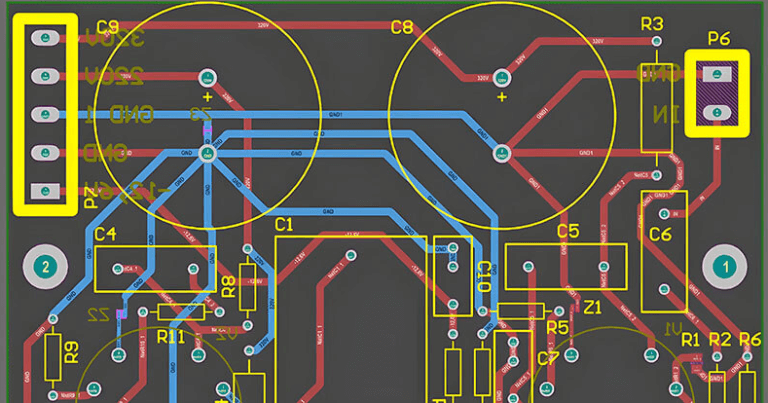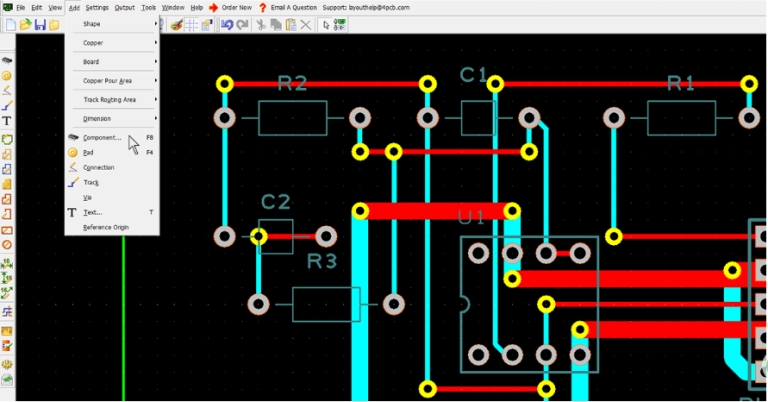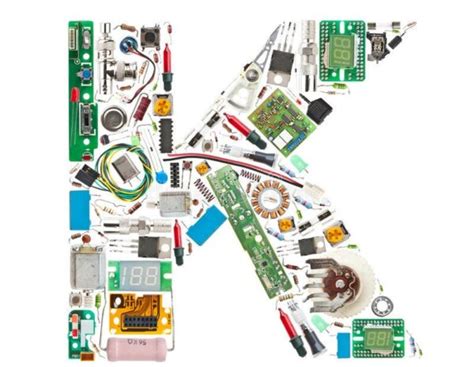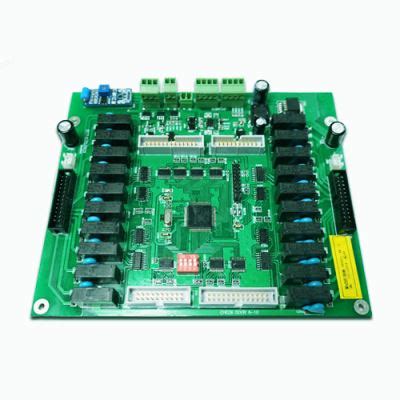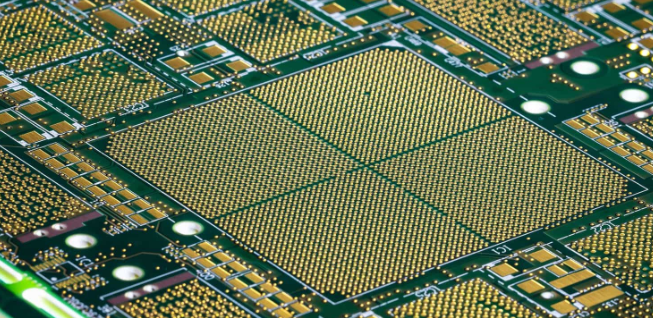Mastering Complex PCB Assembly: Tips for Success and Precision
Key Takeaways
Navigating the intricate world of complex PCB assembly (or PCBA) involves understanding both the fundamentals and the advanced techniques that contribute to precision and efficiency. One of the first steps is to ensure that you have a solid grasp of the basic principles of PCB design. This foundation is essential as it directly influences how components will be placed and soldered during assembly.
Having the right tools and equipment significantly enhances your assembly process. From soldering irons to precision placement tools, each piece of equipment plays a pivotal role in achieving high-quality results. During assembly, employing techniques that guarantee precision—such as using proper alignment guides and following schematic diagrams—is vital.
Moreover, you should be ready to face common challenges in PCBA. Issues such as misalignment, solder bridging, or thermal shock can arise during the process, but with preemptive measures, these can often be mitigated or corrected effectively.
Lastly, integrating robust quality control measures ensures that your PCB assembly remains reliable over time. Testing each unit not only validates its functionality but also enhances overall confidence in your final product—ultimately leading to superior electronic projects that stand the test of time. By mastering these key areas, you significantly increase your chances of achieving success and exceptional quality in complex PCB assemblies.
Understanding the Basics of Complex PCB Design
In the realm of pcb assembly (PCBA), comprehension of complex designs is crucial for successful execution. A Printed Circuit Board (PCB) is a framework that facilitates the connections between various electronic components through conductive pathways. Understanding the basics begins with layered construction—most complex boards consist of multiple layers that can significantly impact both design and functionality.
Key Elements in PCB Design
Schematic Design: A robust schematic serves as a roadmap, detailing component placements and connections, ensuring that every aspect is accounted for before moving to the physical assembly.
Layer Management: Managing multiple layers efficiently is essential; each layer must be crafted to minimize electromagnetic interference while maximizing performance.
Component Layout: Proper component placement ensures that heat distribution and electrical integrity are maintained, which is vital for reliability in high-density applications.
Design Rules Checking (DRC): Employing DRC tools helps identify potential errors early on, guiding designers to adhere to manufacturing limitations and standards.
“In PCB design, attention to detail can save time and reduce costs during assembly.”
Advantages of Mastering Complex Designs
Mastering complex PCB design offers numerous advantages that enhance both functionality and efficiency in assembly operations. By streamlining layouts and adhering to design standards, one can increase the density without compromising on quality. Additionally, a strong foundation in these fundamentals allows for better collaboration with manufacturers during the pcba process, which ultimately propels innovation in electronic development.
By investing time to understand these core aspects, you’ll set a solid groundwork for tackling more intricate challenges later on in your journey through pcb assembly.
Essential Tools and Equipment for PCB Assembly
In the intricate world of pcb assembly, having the right tools and equipment is crucial for achieving precision and efficiency. A well-organized workspace with essential tools can significantly impact the quality of your work. Begin with a reliable soldering iron, as it allows for effective joining of components to the PCB. Additionally, a digital multimeter is indispensable for testing and ensuring proper connectivity throughout the assembly process. For component placement, a good set of tweezers is vital, particularly when dealing with small SMD components that require careful handling.
An adjustable hot air rework station provides flexibility in soldering and reworking delicate parts without causing damage to surrounding areas. Furthermore, quality PCB holders or fixtures can stabilize your project during assembly, reducing the risk of mistakes from hand movement. Using a magnifying lamp or microscope assists in inspecting solder joints and component alignment, ensuring that every detail is addressed before finalizing your product.
Always make sure that you are well-equipped with appropriate safety gear such as anti-static wrist straps to prevent damage to sensitive components during the pcba process. In addition, having access to a robust set of cutters, pliers, and other basic hand tools will facilitate smooth operation throughout your assembly projects. Each tool plays a vital role in not just enhancing productivity but also ensuring that you achieve reliable and high-quality results in your electronic endeavors. Whether you’re working on prototypes or commercial products, investing in these essential tools will pave the way for success in your complex PCB assembly tasks.
Techniques for Ensuring Precision in Assembly
Precision is paramount in pcb assembly, especially when dealing with complex designs that require meticulous attention to detail. To achieve the highest level of accuracy during the pcba process, several techniques can be employed. First and foremost, effective component placement is crucial. Utilizing automated pick-and-place machines can greatly enhance the speed and accuracy of positioning components, ensuring that they are correctly oriented and aligned. Additionally, implementing a robust soldering technique is essential; whether using wave soldering or reflow techniques, consistency in temperature and timing impacts the quality of the solder joints.
Another vital method for ensuring precision is maintaining a clean working environment. Dust, debris, and contamination can lead to defects such as misalignment or poor solder connections. Regular maintenance of tools and equipment helps sustain their performance over time, which is critical for achieving reliable results in each assembly task. Calibration of equipment should also be performed routinely to align with manufacturers’ specifications.
Finally, thorough training for personnel involved in the pcb assembly process cannot be overlooked. Knowledgeable team members equipped with an understanding of complex designs will contribute significantly to minimizing errors and boosting efficiency throughout the assembly line. By integrating these strategies into your workflow, you can master precision in complex PCB assembly and deliver high-quality electronic products consistently.
Common Challenges in Complex PCB Assembly and How to Overcome Them
Complex PCB assembly often comes with a range of challenges that can impede efficiency and precision. One significant issue is managing component placement accurately, especially with densely populated boards. Misalignment can lead to improper soldering and ultimately affect the functionality of the entire device. To tackle this, employing automated pick-and-place machines can enhance precision and reduce human error during the assembly process. However, it’s crucial to ensure that these machines are calibrated correctly.
Another challenge is thermal management during soldering processes. If the temperature is not controlled adequately, it can result in thermal stress on components, leading to failure. Utilizing reflow ovens with precise temperature profiles helps mitigate this risk, ensuring that each component is soldered uniformly without overheating.
Moreover, dealing with complex PCB layouts often introduces signal integrity issues that are challenging to diagnose post-assembly. Implementing design-for-manufacturability principles before production can minimize these issues significantly by ensuring layouts are amenable to assembly techniques.
Finally, insufficient experience or knowledge about handling intricate designs can complicate the assembly process itself. Continuous training and cross-referencing technical documentation on PCBA best practices will significantly empower teams to tackle issues effectively.
By adopting robust techniques and utilizing advanced tools properly, engineers can overcome these common hurdles in complex PCB assembly, leading to higher quality outcomes in their electronic projects.
Best Practices for Soldering and Component Placement
When it comes to PCB assembly, mastering the art of soldering and effective component placement is essential to achieving a reliable and efficient outcome. One of the primary best practices for ensuring precision in PCBA is to use the right type of solder. Opt for lead-free solder whenever possible, as it meets environmental standards while providing a strong and conductive bond. Additionally, maintaining an appropriate temperature during the soldering process is crucial; too high can damage components, while too low may result in weak connections.
Moreover, before beginning with soldering, ensure that the PCB surface is clean and free from contaminants that could hinder adhesion. Utilize good quality flux to improve the flow of solder and create smooth connections. It’s also important to properly align components before applying solder, as even minor misplacements can lead to complex issues later on.
Implementing techniques such as thermal profiling ensures that heat exposure is regulated throughout the assembly process, further enhancing precision. Consider using tools like a soldering iron with adjustable temperature settings or even employing automated assembly systems when handling intricate designs. Consistency in these practices not only boosts quality but also helps mitigate common errors associated with complex board layouts.
By adopting these best practices in your “PCBA” process, you can significantly enhance both the reliability of your electronic projects and the overall quality of your final product.
Quality Control Measures for PCB Assembly
Quality control is a critical aspect of PCB assembly that ensures the final product meets the required standards before deployment. Implementing robust quality control measures can significantly reduce defects and enhance reliability in complex PCBA processes. Beginning with thorough inspections, each stage of assembly should incorporate visual and functional checks. Utilization of automated optical inspection (AOI) systems can play a pivotal role in identifying common soldering issues and component misalignments, thereby safeguarding against potential failures. Additionally, employing statistical process control (SPC) techniques allows teams to monitor production metrics closely, enabling timely adjustments to maintain precision throughout the assembly operation. Furthermore, incorporating test procedures at various stages, including in-circuit testing and functional testing, provides early detection of faults, ensuring that only high-quality units are shipped to customers. Adhering to industry standards such as IPC-A-610 for acceptability ensures that every PCBA not only meets regulatory compliance but also aligns with best practices in electronic manufacturing. By establishing a comprehensive quality control framework, organizations can cultivate an environment focused on continual improvement and exceptional craftsmanship in complex PCB assembly operations.
The Role of Testing in Ensuring Reliability of PCBs
In the field of pcb assembly, thorough testing is crucial for guaranteeing the reliability and integrity of the final product. Each component on a PCBA must function seamlessly to ensure optimal performance, making the testing phase not just an optional step but a necessity. By employing a variety of testing methods such as Automated Optical Inspection (AOI), In-Circuit Testing (ICT), and functional testing, manufacturers can identify potential defects early in the assembly process. These processes help in evaluating solder joints, measuring component values, and assessing operational capabilities, which ultimately leads to higher quality outcomes. Additionally, rigorous testing can significantly reduce long-term failure rates, enhancing the durability of the device in real-world applications. Moreover, data collected during these tests provide valuable insights that can drive improvements in both design and assembly methods for future projects. Thus, incorporating robust testing procedures is essential for achieving high-quality pcb assembly solutions that meet stringent reliability standards in today’s competitive electronic landscape.
Future Trends in Complex PCB Technology and Assembly Methods
As the demand for more sophisticated electronic devices grows, the future of complex PCB assembly or PCBA is set to evolve dramatically. Innovations in materials and manufacturing processes are leading to significant advancements in assembly methods. One such trend is the increased use of flexible PCBs, which offer enhanced functionality and space-saving capabilities. These flexible circuits adapt seamlessly to various shapes and configurations, making them ideal for modern electronics, including wearable devices and compact gadgets.
Moreover, the incorporation of automated assembly technologies is transforming the landscape of PCBA. Automation not only enhances efficiency but also improves precision, reducing human error during assembly. With advancements in robotics and AI-driven systems, manufacturers are able to produce complex assemblies at unprecedented speeds while maintaining high-quality standards.
Another emerging trend is the focus on environmentally-friendly materials. As regulations tighten around electronic waste and sustainability practices, companies are increasingly sourcing materials that minimize environmental impact without compromising on performance quality. This shift is likely to influence how components are designed and assembled in future iterations of complex PCB technology.
Additionally, the integration of smart technologies into assembly processes enables real-time monitoring and data analysis. By leveraging IoT capabilities, manufacturers can gather insights that allow for proactive adjustments during production, further enhancing quality control measures linked to PCB assembly.
In summary, the combination of flexible designs, automation, eco-friendly materials, and smart technologies signifies a dynamic shift in complex PCB technology and assembly methods. These trends promise not only to improve efficiency but also to revolutionize how PCBs are utilized across various industries moving forward.
Conclusion
In mastering complex PCB assembly or PCBA, it is essential to comprehend the multifaceted nature of the assembly process. Each stage, from component placement to soldering, bears significance in ensuring a successful outcome. A thorough understanding of the underlying principles combined with effective planning can drastically improve results. Utilizing specialized tools and equipment is crucial, as these ensure precision during assembly, thereby reducing errors and enhancing overall efficiency. Recognizing potential challenges, such as alignment issues or soldering difficulties, allows for proactive solutions to be put in place. Furthermore, implementing rigorous quality control measures guarantees that the PCB assembly meets high standards of reliability and performance. Therefore, investing time in learning and applying these techniques can significantly elevate one’s proficiency in this intricate field. Ultimately, mastering the art of PCBA not only yields reliable electronic products but also positions individuals at the forefront of advancing technology in the industry.
FAQs
What is the process of complex PCB assembly?
The process of complex PCB assembly involves several key steps, including design validation, component placement, soldering, and thorough quality checks. Each step is crucial for ensuring the integrity and functionality of the final product.
What are some common challenges in PCBA?
Common challenges in pcba include misalignment of components, solder bridging, and managing thermal issues. Addressing these challenges requires attention to detail and employing best practices in layout and assembly.
How can I ensure precision in my PCB assembly?
To ensure precision in your pcb assembly, utilize high-quality tools, maintain a clean workspace, and follow detailed assembly guidelines. It’s also beneficial to conduct regular training sessions for your team.
What equipment is essential for efficient PCB assembly?
Essential equipment includes soldering stations, pick-and-place machines, and inspection tools like AOI (Automated Optical Inspection). These tools help streamline the pcba process while maintaining high standards of quality.
How does quality control influence the success of PCB assemblies?
Quality control is vital for detecting defects early in the pcb assembly process. Implementing robust QC measures ensures that any discrepancies are addressed before reaching the final production stage.


